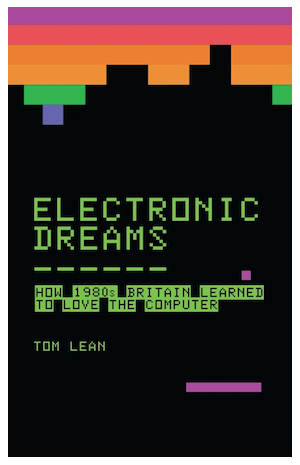Electronic Dreams, book review: The inside story of the UK's computing revolution


Electronic Dreams: How 1980s Britain Learned to Love the Computer • By Tom Lean • Bloomsbury • 288 pages • ISBN: 978-1-4729-1833-8 • £16.99
Do you remember the BBC Micro? Does the Sinclair ZX80 ring a bell? Perhaps the stocky Commodore PET or the petite VIC-20? No?
If you're under 30, I'm not surprised. If you're over 30, then perhaps these devices raise a nostalgic smile as you remember a time when the microcomputer was king.
The 1980s were a decade of contrasts and change, seeing not only the rise of Margaret Thatcher and Ronald Reagan, and the gradual thawing of the Cold War, but also the launch of IBM's Personal Computer in 1981.
In the UK, more than almost any other European country, there was an impressive level of IT innovation and computer usage during the 1980s.
Now that tumultuous decade has been chronicled in Tom Lean's Electronic Dreams: How 1980s Britain Learned to Love the Computer.
Lean is by no means the first to cover this ground, but what makes this book especially interesting is that he's not a geek but a professional historian based at the British Library. You can read our full interview with Lean here. The book came about as part of his work at the British Library on the Oral History of British Science.
Electronic Dreams is a true oral history, painting vivid portraits of key movers and shakers in the British personal computer market such as Alan Sugar, Clive Sinclair, and Chris Curry.
At £235 for 16KB of memory, the BBC Micro was groundbreaking and took the UK by storm. Manufacturer Acorn thought it would sell 12,000 units but actually sold 1.5 million, largely thanks to sales in the education sector. A generation of British youngsters learned about computers thanks to the nation's broadcaster.
The Dragon 32: Similar to the Tandy TRS-80, the Dragon came with a mighty 32KB of memory or 64KB plus an RS-232 port in the larger version.
But we also hear from less well-known characters too. People like Tony Clarke, the patriotic Welshman who launched the principality's own microcomputer, the Dragon 32.
Along with the personal details and reminiscences of the individuals involved in the birth of UK computing, another feature that sets this book apart is the extensive use of magazines and other literature of that decade.
From Sinclair User to Your Computer, Acorn Computer and Practical Computing, the book sources some of the many periodicals from the time.
Such diversity was not surprising: computers were new and complex devices, and presented a new challenge for everyone. People needed help, and the publishing industry was ready and willing to supply it via a flood of new magazines.
In the book, Lean recounts plenty of tales, including Ambit's Roland Perry on helping to build Amstrad's first computer, and recounts how the BBC introduced its own computer -- the BBC Micro -- which was a runaway success that virtually took over the growing educational computer market.
The BBC Micro was built by another UK computer company, Acorn Computers. In due course Acorn spawned the internationally successful microprocessor company, ARM (ARM, of course, originally stood for Acorn RISC Machines).
Sinclair ZX Spectrum: Launched in 1982, this breakthrough 8-bit system with 16KB of memory effectively launched computing in the UK.
Another idea that had a relatively brief but successful time was Prestel. A product of the UK's Post Office, Prestel was a 'viewdata' system that could be seen as a crude but reasonably effective precursor of the internet.
The birth of the computer revolution was shaped by the people who were doing it: writing code, analysing, developing and designing. But another major factor was the computing press -- the journalists who chronicled developments day by day.
"Revolutions, political and technological, rely more than anything else on the circulation of ideas and information to get them started," writes Lean. "The electronics and computer press were undoubtedly the nerves of the popular computer revolution, but they were also the only way that information got around."
Read more book reviews
- The Boy Who Could Change the World, book review: A tantalising legacy
- Heartificial Intelligence, book review: A question of values
- Cooking for Geeks (2nd Edition), book review: A tasty second helping